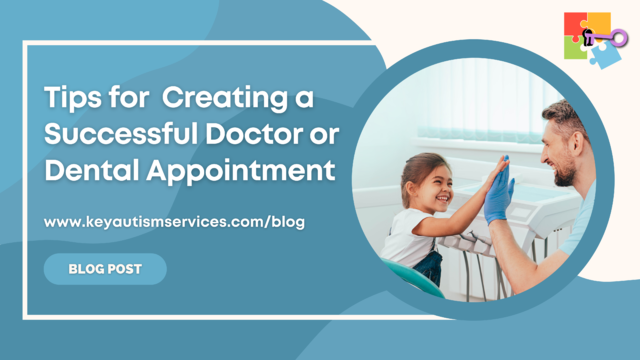Going to the doctor or dentist may not be a requirement for an individual on a very frequent basis but is a good preventative measure that one must take as a proactive strategy to ensure optimum health for the body and teeth. The recommendation made by health practitioners is that a visit is made every 6 months as a routine check.
These routine checks can present challenges for an individual with autism. Unfortunately, these visits can become traumatizing and very unpleasant for everyone involved. To ease this population or anyone who fears these visits can be coached and behaviors shaped to tolerate and accept the restrictions that these visits present.
Let us consider a few proactive strategies that can be practiced at home before a Dentist visit:
- Have a consistent routine at home to maintain dental health. Ensure brushing teeth early on in a child’s life so that this becomes more of a habit and can help the child tolerate any sensory discomforts.
- Use a visual task analysis and/or social story or video to go over toothbrushing and the steps involved. Ask your BCBA to help you with this.
- Show a video on what a dentist visit would entail.
- Practice opening the mouth and even pretend play/role play as a Dentist to make it more fun. Use safe pretend tools to help the individual tolerate something in the mouth. Use a count to let the child know how long they will have to keep his/her mouth open. If your child wants to take turns doing the same to you or a doll, let him/her do so, teaching them the gentle way to handle another person.
- Practice tooth brushing by slowly starting with smaller sized toothbrushes or an electric toothbrush if preferred, a toothpaste flavor that is preferred or tolerated, counting to a certain count for brushing the outside, the inside, and all around. Include rinsing and ensuring that a clean toothbrush is put away in its spot.
- If possible, ask your Dentist if you can do a mock visit to walk through the office and to practice sitting in the chair and having lights on.
- Practice several times before the actual visit. Do not forget to use encouraging words and reinforcement for successful trials.
For a Doctor visit:
- Use a visual task analysis and/or social story or video to go over visiting the doctor for a sick visit or a preventative check and the steps involved. Ask your BCBA to help you with this.
- Show a video on what a doctor’s visit would entail.
- Pretend play/role play as a doctor to show what a visit would simulate. If your child wants to take turns being the doctor or nurse, encourage them to do so. Use pretend tools that mimic the ones at the doctor’s office, especially if you know your child will receive a shot soon.
- Practice several times before the actual visit. Do not forget to use encouraging words and reindforcement for successful trials.
For a Doctor or Dentist visit:
- Pack some favorite comfort items such as a blanket, toy, doll, etc.
- If they use fidget toys or other items to help with anxiety and stress, pack them.
- If they use headphones to help control the external noise sensitivities, pack those.
- Technology tools such as iPads, and phones to play videos or music have become a common thing to keep handy to help destress and to support remaining calm.
- Have a plan for when things do not go well, and your child has a meltdown. Plan to leave the clinic right away or move your child to a calmer area to reduce the anxiety.
- Build tolerance by incrementally working on the steps that need to be accomplished.
- Do not be discouraged and try again another time.
These suggestions and strategies offer a guide to support your family in having successful dentist and doctor visits. Your ABA team at Key Autism Services can further assist you and your child with accomplishing this challenging goal.





